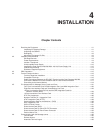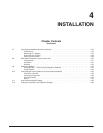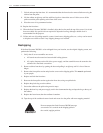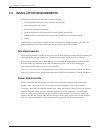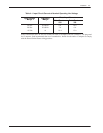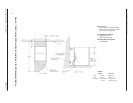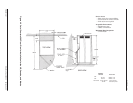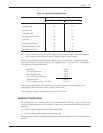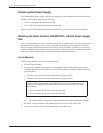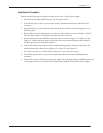
4-4
Installation and Maintenance
Volume
Octel Overture 200/300 Serenade 3.0
PB60014–01
4.2 INSTALLATION
REQUIREMENTS
Installing
the Octel Overture 200/300 involves the following:
-
Connecting PBX extensions to Octel Overture 200/300 ports
-
Connecting power to the cabinet
-
Installing the configuration database
-
Updating the database for both the Octel Overture 200/300 and the PBX
-
Dedicating trunks in the PBX to the Octel Overture 200/300 hunt or distribution group
- Testing
Installation personnel should be familiar with the data format and change procedures of the PBX. For
further explanation, refer to the Preparing the Phone System chapter in this volume.
Site
Requirements
Install
the Octel Overture 200/300 in a dust-free location. Keep the Octel Overture 200/300 separate from
other equipment that might produce heat, generate strong magnetic fields, or produce vibration.
If space and environment permit, install the Octel Overture 200/300 in the telephone equipment room.
Place the cabinet to permit front access and ventilation on all sides. The air filter cleaning and
replacement schedule depends on the local environment.
Figure 4-1 is a floor plan for installing the Octel Overture 200 in the United States, Canada, and Mexico.
Figure 4-2 is a floor plan for installing the Octel Overture 300 in the United States, Canada, and Mexico.
Power
Requirements
The
Octel Overture 200/300 should receive power from a dedicated, separate circuit. If this is not
possible, make sure that the circuit is free of lar
ge motorized equipment, such as copy machines.
The power circuit must be compatible with the input voltage and frequency rating of the Octel Overture
200/300. The power circuit must have adequate current rating and be protected by a circuit breaker
.
Check the voltage rating marked on the power
-line filter where the power cord connects to the Octel
Overture 200/300. The voltage rating indicates the input current rating for the Octel Overture 200/300.
T
able 4-1 indicates the input circuit current that is to be supplied by a dedicated branch circuit.




